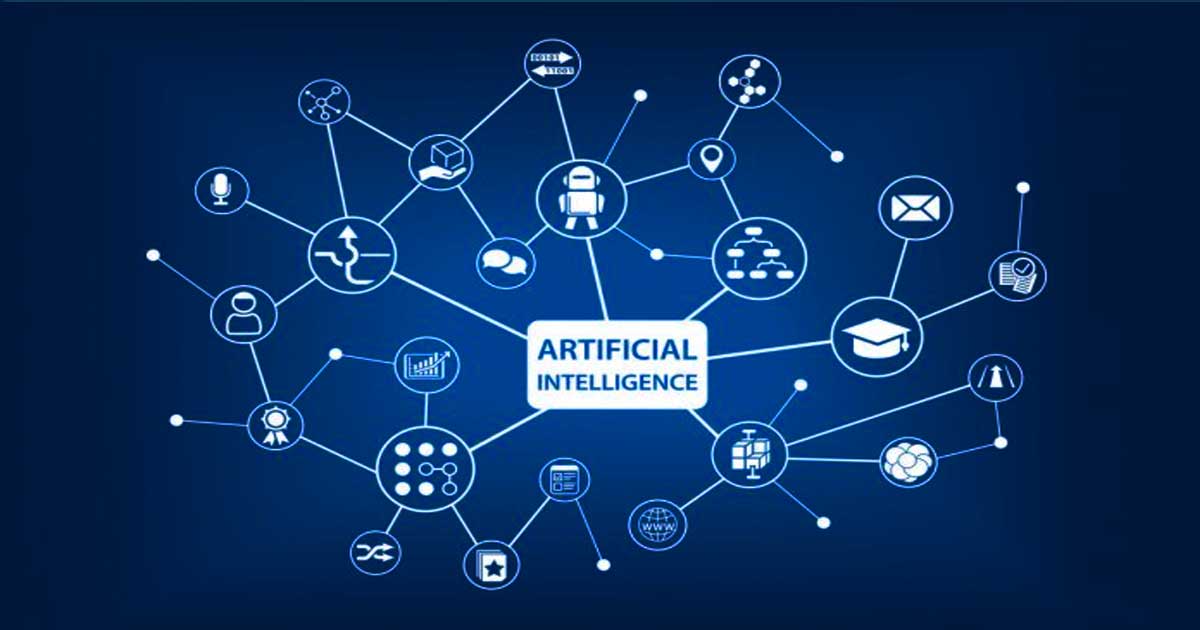FET Blogs





In 1955 John McCarthy announced Artificial Intelligence for the first time. The term, ‘Artificial Intelligence’ is derived from two words, artificial- a thing which is not natural, and intelligence- a capacity to understand and collect information about events, a particular group, etc.
After combining these two words into a single frame, ‘Artificial Intelligence’ means a computer programming code in a machine like a computer exhibiting traits of human beings like learning, problem-solving, scanning, storing information like memory, thinking, etc. Just like mimicking someone, a system of Artificial Intelligence does the same as human beings perceive things by performing various tasks from their environment.
The system is very quick in recognizing the impulses, and with advanced deep learning, it processes the tasks using natural language processing (NLP) technology. Being a natural branch of artificial intelligence, NLP fulfills the gap of communication between a machine and a human being through many principles and disciplines like computer science, and computational linguistics. NLL helps the machine to understand the human language by turning into their language. The technology saves valuable time and energy by performing its operation in less time than expected.NLP assists artificial intelligence to do multiple tasks like reading a text, following the instructions given in the text, checking records simultaneously, etc. In short, artificial intelligence enables the machine to learn languages to perform tasks. Now,
Artificial Intelligence simulates and trains the machine to mimic human actions like speaking a particular dialect, recognizing colors, shapes, etc. whereas machine learning is a subset of artificial intelligence that are developed to interpret human actions. Machine learning searches for data and tries to reach to a conclusion just like us using certain algorithms. Like a car has a laser-like device on its top, giving signals for the in-between objects while parking in a parking area, and also informing about all the cars that are surrounding it. But both need large volumes of data, granular data, and extremely diversified data.
In today’s world, since its inception, Artificial Intelligence has become an integral part of every person’s life due to this, our life has become very fast. AI has led to cut short time and multitasking at once. Artificial Intelligence repetitively learns and discovers through diversified data. Without human involvement, it clarifies high volume of data without fatigue and analyses deep data, hidden into deep layers of neural networks. It is capable of identifying and performing human tasks, deep neural networks achieve incredible accuracy by interacting with humans like a person who uses Google Search, Alexa,. Siri, Macbook, Tablets etc.,
Before learning the working structure of artificial intelligence, we need to research and have deep knowledge about its basic components. Here they are:
Artificial intelligence has made our life error-free with superb advanced high-technology. From self-driving and parking vehicles, to digital assistance thanks to Artificial Intelligence in assisting our homes, offices, our objects like mobile phones, washing machines, etc. installing biometric machines in offices, has made it easy to track the attendance of employees. Google assistant, Siri, and Alexa to speech and face recognition have made our gadgets safe and secure. Even applications like Uber, RedBus, Ola use artificial intelligence that allows us to share route details along with the driver and cab information to our dear ones.
Many high-profile industries demand Artificial Intelligence for security, risk recognition, legal assistance, etc. For example, such as health care industry need AI for X-rays and diagnosis treatment of patients. The retail sector uses AI in collecting and possessing multiple customer data online, and offline and also in online shopping and multiple payment options like COD, internet banking, debit, or credit cards. The manufacturing industry also needs AI to analyses IoT (Internet of Things), and for calculating demand and supply of the products in the market. The banking sector uses AI to identify any fraudulent activity, risk measurement, fast and smooth transactions, credit scoring, etc.
The future of Artificial Intelligence will be vast and more extensive than the present time. From deep learning, the networking system to driverless cars, it will make the world a digital place. It is influencing everyone’s life making it very simple, optimized, and fulfilling the purpose of life and understanding the mechanics behind Artificial Intelligence. Hence, humans will successfully merge with it completely to do autonomous work.
School of Engineering & Technology Jain (Deemed-to-be- University) is a pioneering school of engineering that offers wide variety of new- age courses. The institute offers both B.Tech and M.Tech programs in Artificial Intelligence that opens a wide gateway for job opportunities for the students even at a global platform. The course gives hands on experience and make the students ready to face the industry demands, with advance knowledge of artificial intelligence.
A1: The impact of AI mainly depends on how it is used. It can be both beneficial and harmful. AI boosts productivity and improves the ability to make decisions. It also helps in areas like healthcare and education, but at the same time, it raises concerns such as privacy and misinformation.
A2: No, Google itself is not an AI. It is a company, but it heavily uses artificial intelligence in its various products and services. Tools like Google Search’s AI Overview, Gemini, and Google AI Labs are some examples.
A3: AI differs from natural intelligence in the following ways.
A4: Artificial intelligence is designed by humans and relies on data, algorithms, and rules, whereas normal intelligence is inherent to living beings and involves creativity, self-awareness, and emotional understanding. AI mimics certain intelligent behaviours but lacks consciousness and deeper understanding.